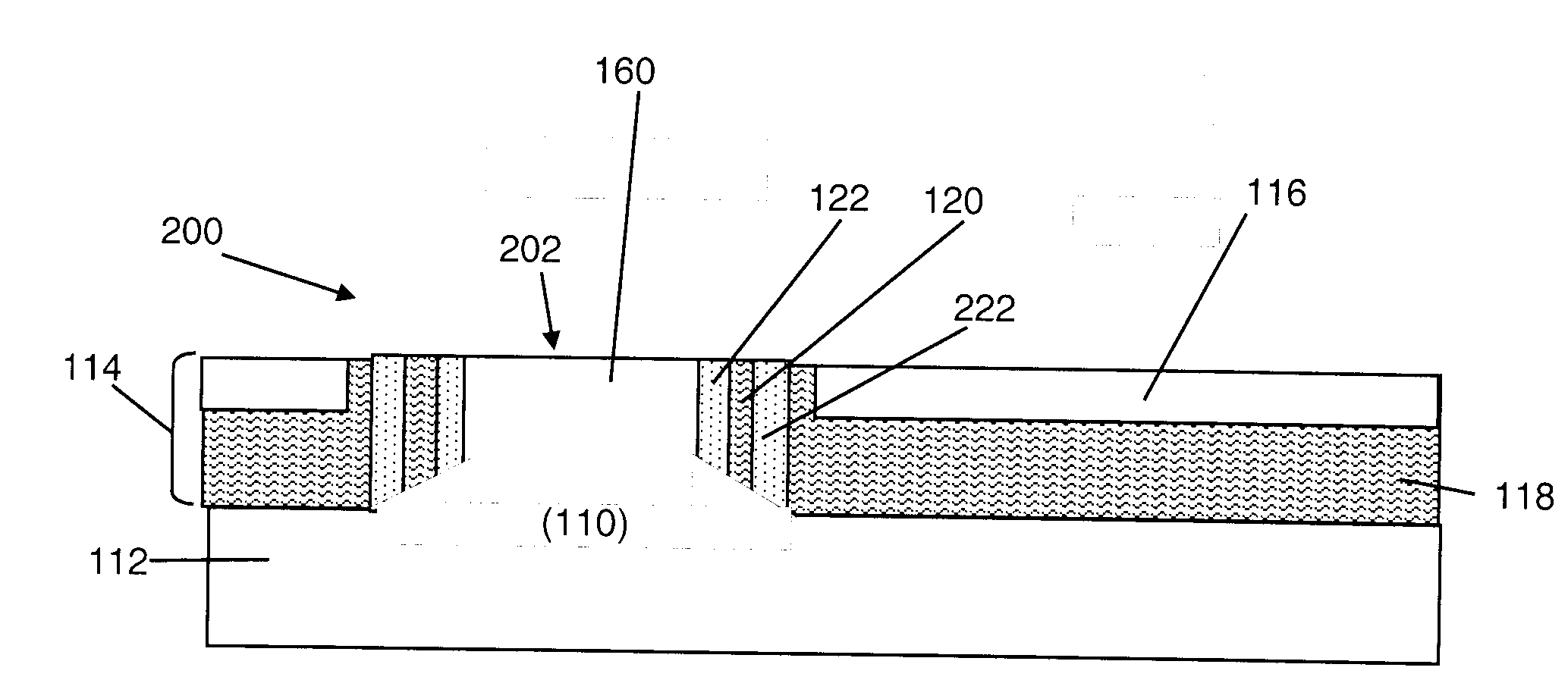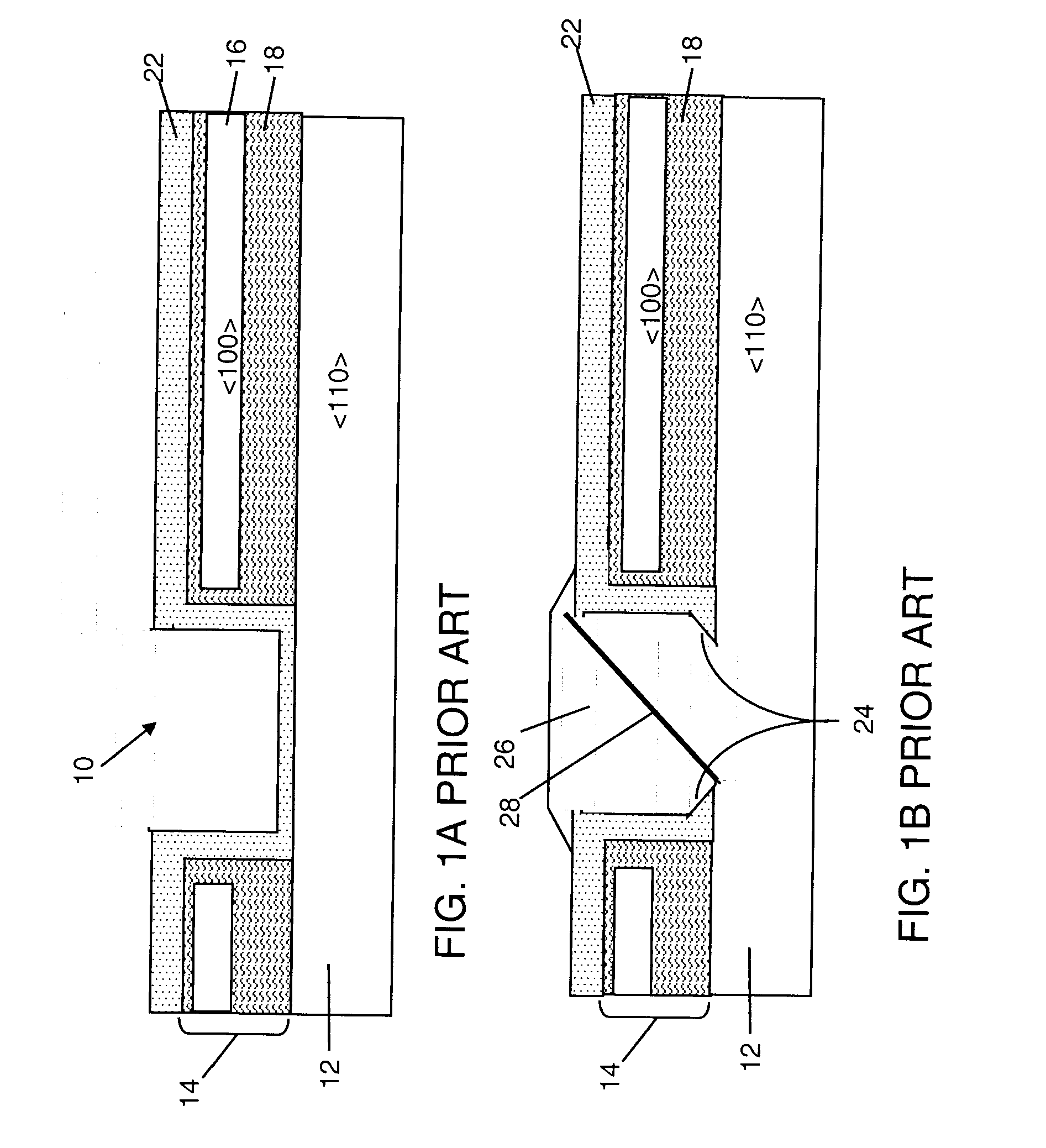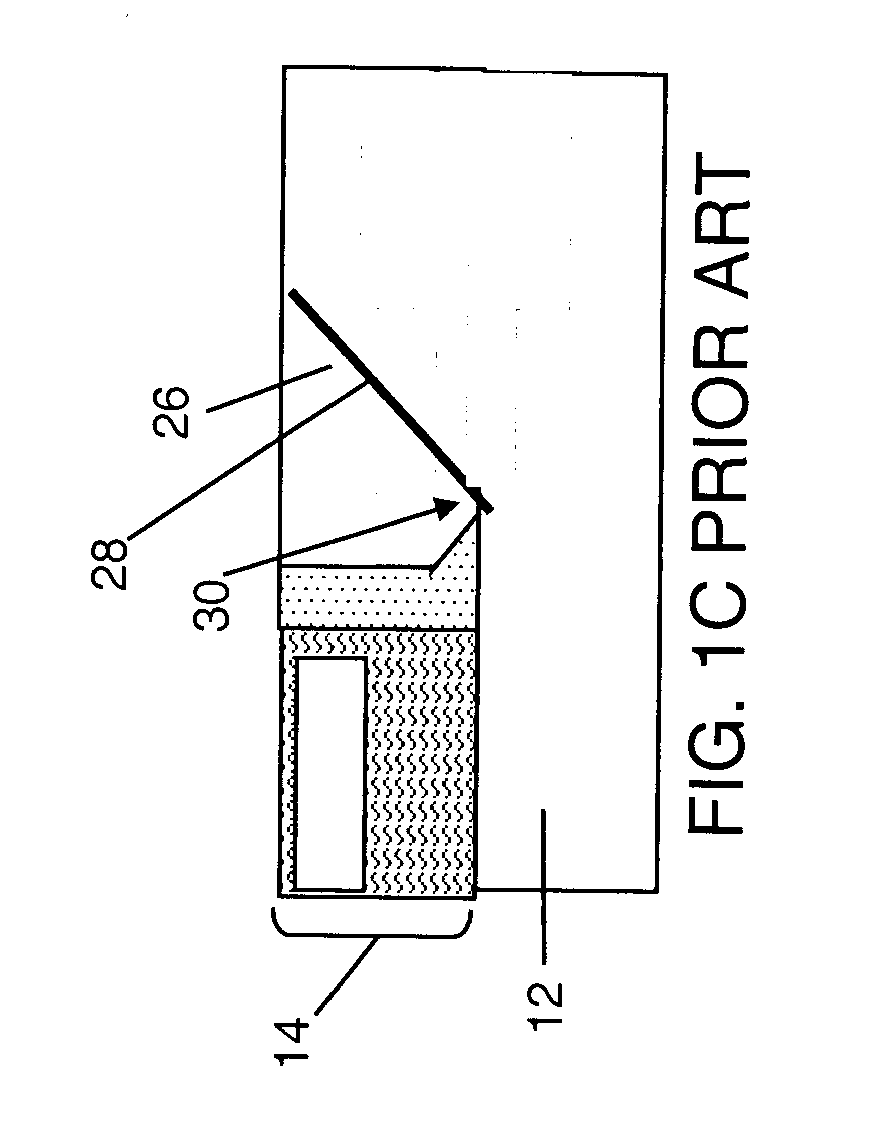Stacking fault reduction in epitaxially grown silicon
a technology of epitaxial growth and stacking faults, applied in the direction of semiconductor/solid-state device manufacturing, electrical equipment, semiconductor/conductor devices, etc., can solve the problems of reducing the structure of growing stacking faults, stacking faults are often planer defects, and the above-described hybrid orientation logic device manufacturing presents challenges, etc., to reduce stacking faults and suppress stacking faults
- Summary
- Abstract
- Description
- Claims
- Application Information
AI Technical Summary
Benefits of technology
Problems solved by technology
Method used
Image
Examples
Embodiment Construction
[0020]Turning to FIGS. 2-8, various embodiments of a method of epitaxially growing stacking fault reduced silicon 160 (FIGS. 7-8) in an opening 130 (FIGS. 4-5) to silicon will be described. The method is advantageous as part of a method forming an intermediate stacking fault reduced hybrid surface orientation structure 200 (FIG. 7).
[0021]Turning to FIG. 2, if the method is used to form stacking fault reduced surface orientation structure 200 (FIG. 7), first, a silicon-on-insulator (SOI) substrate 114 is provided adhered to a bulk silicon substrate 112. SOI substrate 114 includes a silicon 116 within a buried silicon oxide (BOX) layer 118. As understood, silicon 116 of SOI substrate 114 has a different surface orientation than that of bulk silicon substrate 112. For example, as shown, silicon 116 has a surface orientation of (100), while bulk silicon substrate 112 has a surface orientation of (110). The surface orientations illustrated are only examples, and any different surface ori...
PUM
 Login to View More
Login to View More Abstract
Description
Claims
Application Information
 Login to View More
Login to View More - R&D
- Intellectual Property
- Life Sciences
- Materials
- Tech Scout
- Unparalleled Data Quality
- Higher Quality Content
- 60% Fewer Hallucinations
Browse by: Latest US Patents, China's latest patents, Technical Efficacy Thesaurus, Application Domain, Technology Topic, Popular Technical Reports.
© 2025 PatSnap. All rights reserved.Legal|Privacy policy|Modern Slavery Act Transparency Statement|Sitemap|About US| Contact US: help@patsnap.com



